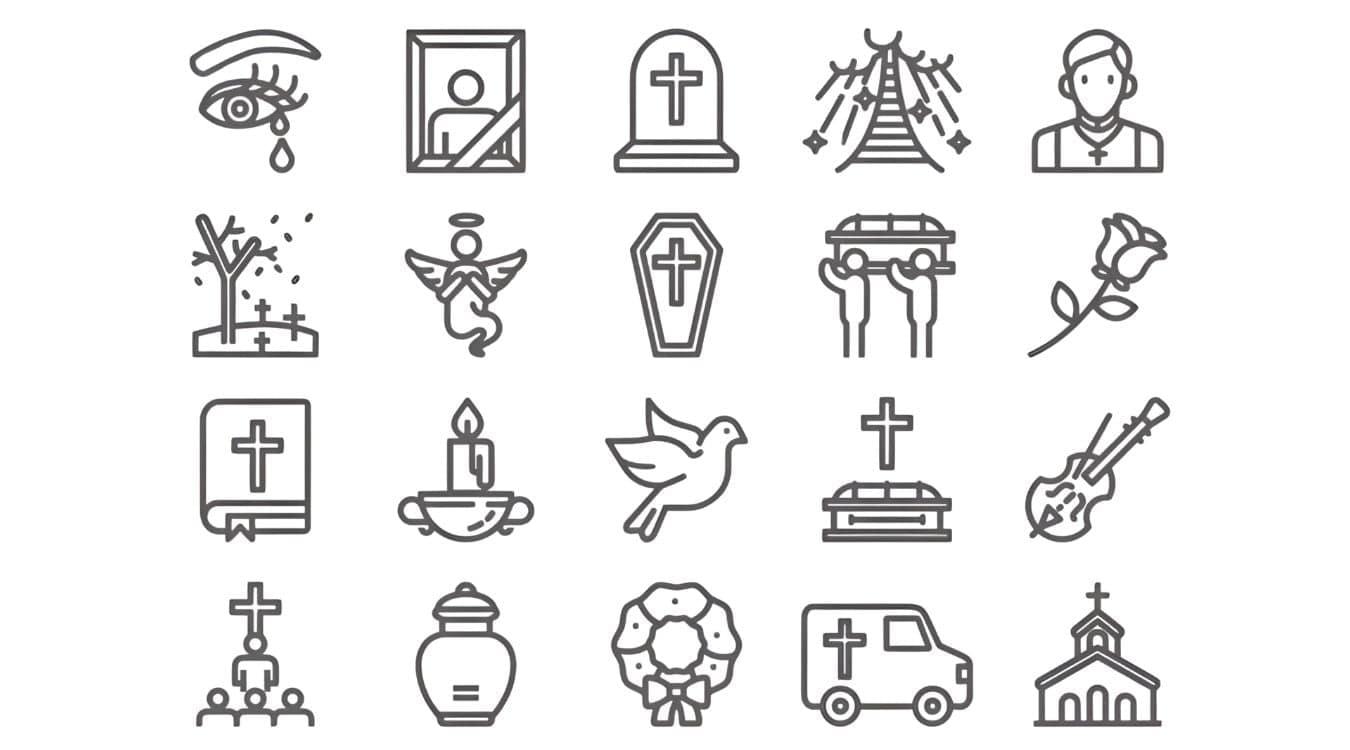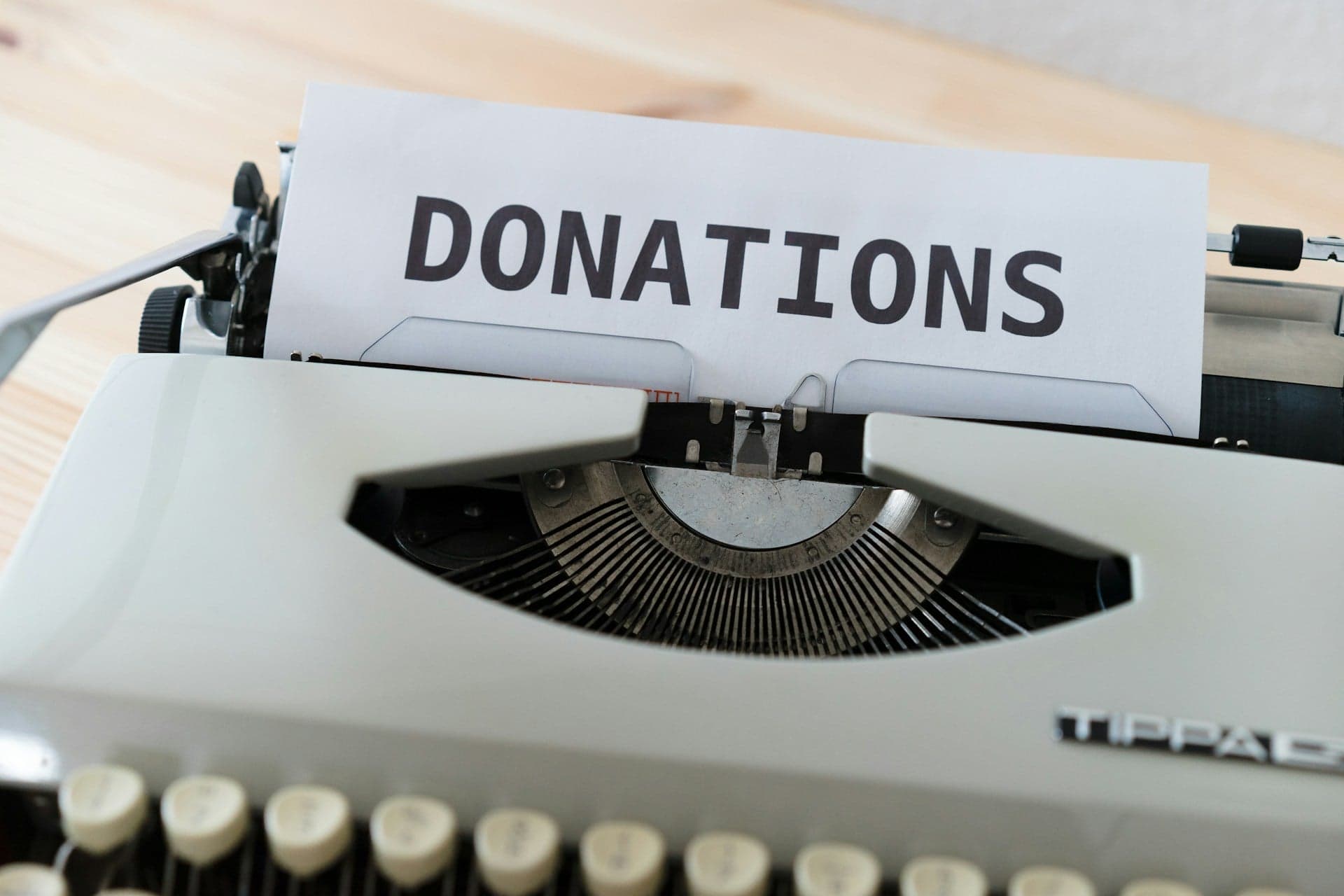Funeral symbols: their meaning and origin

Introduction
For millennia, funeral symbols have accompanied our farewell rituals. They express what words sometimes cannot: hope, continuity, memory, or peace. Whether religious, natural or personal, these symbols carry a profound meaning that transcends cultures and eras.
Understanding funeral symbolism allows us to create a ceremony that truly reflects the deceased person and their family's values. Choosing a dove rather than a cross, a butterfly rather than an anchor, is not insignificant. Each symbol tells a story, conveys a message, offers comfort.
In this article, we explore the most common mortuary symbols and their origin. From traditional religious symbols to universal natural representations, through to motifs of eternity and contemporary choices, you will discover how these visual elements enrich the meaning of a ceremony. You will also find practical advice for incorporating them authentically and personally into your tributes.
📌 Summary (TL;DR)
Funeral symbols carry universal meanings: the cross for Christian faith, the dove for peace, the butterfly for transformation, or the flame for eternal memory. Each symbol, whether religious, natural or personal, allows values and beliefs to be expressed during a farewell ceremony.
Understanding their origin helps to create an authentic and personalised tribute that truly honours the deceased person.
📚 Table of contents
Why are funeral symbols important?
Funeral symbols play an essential role in the grieving process. They offer a universal language to express emotions that are difficult to put into words: love, hope, continuity.
These symbols convey values and create a bridge between the living and the memory of the deceased. They can be found on monuments, in ceremonies, and today on digital memorial pages.
They allow families to personalise the tribute and give meaning to the separation.
The most common religious symbols
The major religious traditions have developed mortuary symbols laden with spiritual meaning. These emblems express faith, hope and the vision of life after death specific to each religion.
Their presence in funeral ceremonies brings comfort and continuity to believing families. They recall shared values and belonging to a spiritual community.
Here are the main religious symbols used at funerals.
The Christian cross
The cross represents Christ's sacrifice, his resurrection and the hope of eternal life. It is the central symbol of Christianity, present in Catholic and Protestant ceremonies.
It exists in different forms: Latin cross (the most common), Orthodox cross (with three bars), Celtic cross (with a circle), or Huguenot cross.
It can be found on gravestones, death notices and during funeral liturgies.
The Star of David
The Star of David (Magen David) is the central symbol of Judaism. It represents Jewish identity, divine protection and the link with ancestral tradition.
Composed of two interlaced triangles, it evokes the union between the divine and the human, heaven and earth.
It is found engraved on gravestones in Jewish cemeteries and present at funerals according to Hebrew rite.
The crescent and star
The crescent and star are associated with Islam and Muslim culture. They symbolise faith, divine guidance and spiritual hope.
Although their use varies according to local traditions, these symbols are frequently present in Muslim cemeteries and during Islamic funeral ceremonies.
They recall belonging to the community of believers (Ummah) and submission to divine will.
Natural and universal symbols
Beyond religious traditions, certain funeral symbols draw their strength from nature and speak to all cultures. They evoke universal realities: peace, purity, the cycle of life.
These symbols are particularly appreciated in secular or interfaith ceremonies. They allow the deceased's memory to be honoured without specific religious reference.
Their visual language is immediately comprehensible and emotionally powerful.
The dove
The dove symbolises peace, purity and the liberated soul taking flight. Although it has biblical origins (the flood), its use has become universal.
It represents hope, reconciliation and restored serenity. It is frequently found on death notices and in secular ceremonies.
It is a reassuring symbol that evokes gentleness and peaceful transition to another state.
The lily and white flowers
The white lily embodies purity, innocence and spiritual rebirth. It is a flower traditionally associated with funeral ceremonies, particularly for children and young people.
White flowers in general (roses, carnations, chrysanthemums) evoke respect, dignity and luminous memory.
Their presence brings a soothing and solemn dimension to funeral tributes.
The tree of life
The tree of life represents continuity, family bonds and the eternal cycle of life. Its roots plunge into the past, its trunk anchors the present, its branches rise towards the future.
This symbol transcends religions and speaks to everyone. It evokes transmission, heritage and the strength of bonds that persist beyond death.
Highly valued in contemporary and secular approaches, it often adorns memorial pages.
The butterfly
The butterfly symbolises metamorphosis, transformation and the passage from one state to another. Its mutation from caterpillar to winged insect naturally evokes the transition from earthly life to another form of existence.
It is a reassuring symbol that suggests something beautiful emerges from change. It expresses lightness, freedom and the continuity of the soul.
Particularly appreciated for its poetic and consoling dimension.
Symbols of eternity and continuity
Certain mortuary symbols express the idea that something persists beyond physical death: memory, love, the soul, the legacy passed on to future generations.
These symbols offer comfort by suggesting that the separation is not total, that the bond remains in a different form.
They speak of eternity, infinite cycles and continuous spiritual presence.
Infinity and the ouroboros
The infinity symbol (∞) evokes eternity, endless love and the continuity of memory. Simple and universal, it expresses that certain bonds never break.
The ouroboros, a serpent biting its own tail, is an ancient symbol representing the perpetual cycle of life, death and rebirth.
These two emblems speak of cosmic continuity and spiritual permanence.
The flame or candle
The flame or candle symbolises eternal light, living memory and the spiritual presence of the deceased. It evokes the soul that still shines in the hearts of the living.
This symbol is found in many traditions: the Jewish yahrzeit (annual memorial candle), Catholic candles, secular memorial candles.
Lighting a candle remains a universal gesture of remembrance and tribute.
The anchor
The anchor represents hope, stability and solid faith. It is an ancient Christian symbol (used by early Christians) but also a maritime emblem evoking the final port of call.
It suggests that despite life's storms, an inner strength keeps us anchored in our values and beliefs.
Particularly chosen for people with a connection to the sea or deep faith.
Personal and contemporary symbols
Funeral symbolism is evolving towards a more personalised approach. Today, families choose symbols that reflect the deceased's unique personality: their passions, values, profession.
We see the emergence of musical instruments, sporting symbols, charity logos, favourite animals, or professional emblems.
This personalisation makes the tribute more authentic and celebrates life as it was lived.
How to choose and use a funeral symbol
The choice of a funeral symbol must respect the deceased's beliefs and wishes. Take into account their faith, values and personality. Do not hesitate to combine family tradition and personal touch.
Incorporate the chosen symbol into the ceremony, on notices, and on online memorial pages. On Wolky, you can add photos and meaningful symbols to the death notice and Memories pages.
A well-chosen symbol helps loved ones to reflect and honours the memory with dignity.
Summary table of funeral symbols
Symbol | Meaning | Origin |
|---|---|---|
Cross | Resurrection, hope | Religious (Christian) |
Star of David | Identity, divine protection | Religious (Jewish) |
Crescent and star | Faith, spiritual guidance | Religious (Islamic) |
Dove | Peace, liberated soul | Natural/Universal |
White lily | Purity, innocence | Natural |
Tree of life | Continuity, family bonds | Universal |
Butterfly | Transformation, metamorphosis | Natural |
Infinity | Eternity, endless love | Universal |
Flame/Candle | Living memory, light | Universal |
Anchor | Hope, solid faith | Religious/Maritime |
Funeral symbols carry within them centuries of traditions, beliefs and shared emotions. Whether religious like the cross or the Star of David, natural like the dove or butterfly, or deeply personal, they offer a universal language to express what words cannot say. Each symbol tells a story, that of a unique life and an enduring legacy.
The choice of a funeral symbol is an intimate decision that reflects the values, beliefs and personality of the deceased person. There is no right or wrong choice: what matters is what resonates with your heart and honours your loved one's memory with dignity.
On Wolky.ch, you can create a personalised death notice that incorporates the symbols and visual elements that are dear to you. Our platform allows you to pay tribute to your loved one with respect and authenticity, whilst facilitating sharing with your loved ones.


